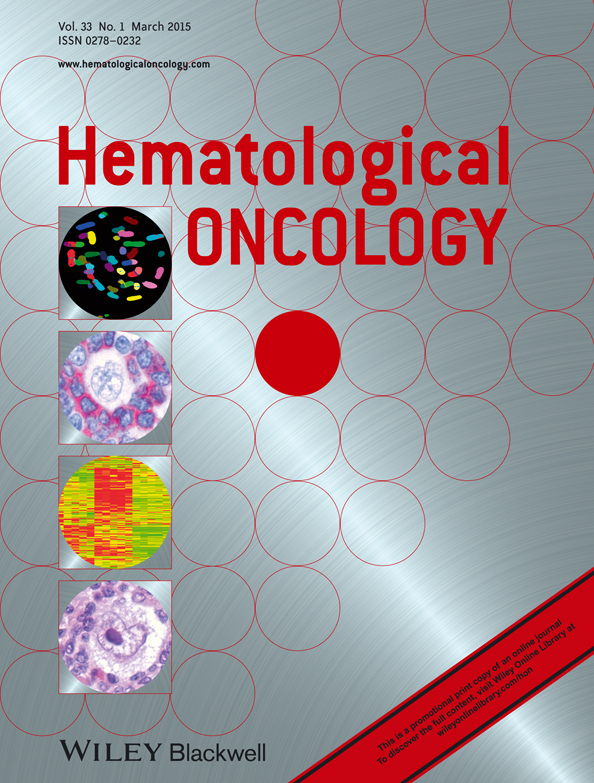Impact of the introduction of rituximab in first-line follicular lymphoma: a retrospective study of 247 unselected patients referred to a single institution with a long-term follow-up
Abstract
Rituximab was approved in France in 2004, following randomized trials that demonstrated efficacy in newly diagnosed high tumour burden follicular lymphoma (FL). This retrospective study compared the management and outcome of FL in unselected patients treated in a single institution before and after rituximab approval. Two hundred and forty-seven adult patients were referred with first-line FL between 1996 and 2010 and are included in this study. The 103 pre-rituximab patients comprising cohort 1 were diagnosed between January 1996 and December 2003; cohort 2 includes the 144 patients diagnosed after the approval of rituximab between January 2004 and December 2010. Baseline clinical and biological data, type of therapy, treatment response, progression-free survival (PFS) and overall survival (OS) rates were compared. There were no statistically significant differences between the two cohorts with respect to baseline clinical and disease characteristics, including FL International Prognostic Index score. The major difference between the two cohorts is the use of rituximab in first line. Seventy-one per cent of patients in cohort 2 received rituximab (19% alone, 52% with chemotherapy) versus 10% in cohort 1 (2% alone, 8% with chemotherapy; p < 0.0001). The objective response rate (ORR) was significantly higher for cohort 2 (ORR 84% compared with 72% for cohort 1; p = 0.03). The PFS and OS rates were also significantly better: 3-year PFS 72% [95% confidence interval (CI) 64–80%] versus 55% (95% CI 45–64%), p = 0.0039 and 3-year OS 98% (95% CI 94–99%) versus 83% (95% CI 74–90%), p = 0.0007. Effect of period of study is significant when using multivariate analysis on PFS and OS and lactate dehydrogenase level (PFS and OS) and age (OS). These data from everyday practice confirm the benefit for patients with FL treated in the last decade through availability of rituximab in first line used alone or in association with various chemotherapy regimens. Copyright © 2014 John Wiley & Sons, Ltd.




